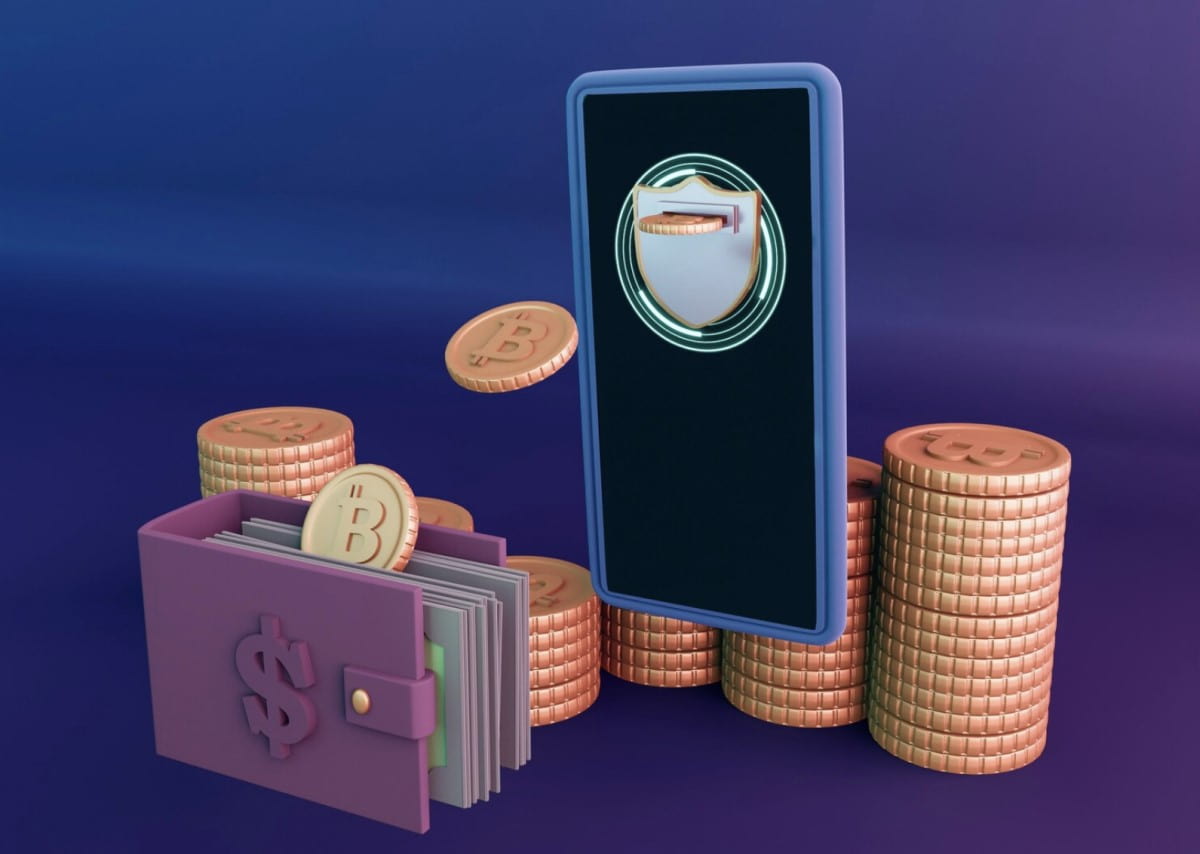Guide on Using Crypto for International Money Transfers

Cryptocurrencies have significantly disrupted financial institutions and transformed how investors trade their assets. Technological advancements have interconnected the world, leading to a growing need for reliable international money transfers. Cryptocurrency is one of the best ways to transfer money internationally, offering faster and more cost-effective services than traditional banks. Therefore, how do you use crypto for international money transfers? This guide discusses the best way to send money overseas, comparing cryptocurrency and traditional payment systems.
Is it possible to transfer money via crypto?
When it comes to international money transfers, Bitcoin and other cryptocurrencies like Ethereum, Cardano and Ripple offer cost-effective options for sending assets abroad. Any of these can be considered the best crypto for transferring money.
The initial step in sending money overseas using digital currency is selecting the most suitable option for your needs. Your choice of digital assets will impact the crypto transaction costs incurred and the duration of wire transfers. Additionally, it's crucial to consider compatibility with crypto wallets.
Most major software wallets like MetaMask and TrustWallet support digital asset transfers. Furthermore, you can utilise a wallet address on exchanges to send and receive assets like Ethereum and Ripple.
Alternatively, you can store digital assets on a hardware wallet – these are secure physical devices that store your assets offline. They offer enhanced security compared to software wallets while enabling transactions with digital assets.
How Crypto Facilitates Transfers
Cryptocurrencies play a significant role in international transfers through various means:
- Reduced Transaction Costs. By eliminating intermediaries, digital currencies bypass the high crypto transaction fees commonly linked with traditional remittance methods.
- Enhanced Transaction Speed. Cryptocurrency transactions can be swiftly processed within minutes or even seconds, enabling almost instantaneous cross-border remittances.
- Enhanced Accessibility. Cryptocurrencies promote financial inclusion by enabling individuals with an internet connection and a digital wallet to send and receive money globally without relying on a conventional bank account.
- Increased Security and Transparency. The underlying blockchain technology of cryptocurrencies ensures secure and transparent transactions.
- Currency Competition. Cryptocurrencies have emerged as competitors to traditional government-issued currencies, fostering innovation and creating new opportunities worldwide.
- Facilitating Global Exchange. In an increasingly global economy, cryptocurrencies have simplified money movement across borders.
While offering numerous advantages, it's crucial to acknowledge that cryptocurrencies also come with risks and challenges; therefore, conducting thorough research is recommended before engaging in cryptocurrency transfers.
Popular Cryptocurrency Solutions for Transfers
To facilitate international transfers, popular cryptocurrency solutions include:
- Crypto Debit or Credit Cards. These cards, such as the Nexo Card Mastercard Crypto Debit Card, Coinbase Card Visa Crypto Debit Card and Binance Card Visa Crypto Debit Card, are widely accepted and instantly converted to local currency for withdrawals.
- Cryptocurrency Exchanges. Platforms like Kraken Exchange and Bybit Exchange make it easy to convert cryptocurrency into cash by allowing users to transfer crypto from anywhere to an account on the exchange.
- Cryptocurrency Wallets. Using crypto wallets to send cryptocurrency ensures decentralisation.
- Stablecoins. Stablecoins like USDC and Tether have facilitated transactions worth $3 trillion in the first half of 2021 alone, making them increasingly popular for international transfers.
Choose your wallet on StormGain
Peculiarities of Crypto Money Transfers

Crypto assets are digital assets that utilise cryptography for security. They're stored on a decentralised network known as a blockchain, which ensures their integrity and transparency. These assets serve various purposes, such as acting as a medium of exchange, preserving value or functioning as a unit of account.
Understanding the functionality of crypto assets involves grasping the fundamentals of blockchain technology. Blockchain operates using distributed ledger technology to record all transactions securely and transparently. Each transaction is added to a block and subsequently verified by multiple computers within the network. Once verified, the block becomes part of the immutable blockchain record encompassing all transfers.
The creation process for these crypto tokens occurs through mining, involving powerful computers solving intricate mathematical problems to produce new crypto tokens and rewarding miners upon successful problem-solving.
Upon completion of mining processes, users can employ these crypto assets to purchase goods/services or trade them on exchanges. However, they must possess a crypto wallet for usage – an essential digital storage solution specifically designed for holding crypto assets.
Pros and Cons of Cryptocurrency Transfers
When considering using crypto for transfers, there are several advantages and disadvantages.
Advantages of crypto for international money transfers:
- Faster transaction speeds. Cryptocurrency payments are processed much quicker than traditional methods due to their decentralised blockchain network, eliminating the need for intermediaries.
- Lower fees. Crypto transactions often incur lower fees than traditional payments, bypassing the high charges imposed by banks and other financial institutions.
- Greater financial inclusion. Crypto payments can be utilised worldwide without requiring a bank account or credit card, promoting financial inclusivity.
Disadvantages of making money transfers with cryptocurrency:
- Volatility. The value of cryptocurrencies can fluctuate significantly, posing risks when used for transactions.
- Regulatory uncertainty. The evolving regulatory landscape surrounding cryptos creates uncertainty for businesses and individuals alike.
- Security concerns. Crypto payments may be susceptible to hacking and theft if proper security measures aren't implemented.
Choose your wallet on StormGain
Problems of Traditional International Transfers

The problems associated with traditional international money transfers are numerous and can cause significant concerns for individuals looking to send money back home from overseas. Let's discuss these common problems and provide practical solutions.
- One of the challenges in international remittance is the varying customer experience based on geography. Customers from different countries have different expectations and priorities regarding international money transfer experiences. The significance of specific qualities may change depending on the transaction size or the person conducting it.
- Furthermore, high costs remain a pervasive issue for expatriate workers involved in cross-border transactions due to fees charged by multiple intermediaries, lack of fee transparency, regulatory expenses, and FX fees during currency conversion.
- Slow processing times for traditional bank transfers also plague users seeking faster services than instant domestic payments. This delay is caused by multiple parties involved in each transaction across borders.
- Security concerns related to potential hacking incidents pose a constant threat when sending funds internationally, as there's no assurance that stolen funds could be recovered if security breaches occur along the payment pathway.
- Additionally, hidden fees resulting from a lack of transparency can lead consumers to financial losses when sending money abroad without clear visibility into the costs and deductions involved.
Cryptocurrency vs traditional payment systems for international transfers
In addition to the advantages and drawbacks mentioned earlier, there are additional factors to consider when comparing crypto payments and traditional payment systems.
- It's important to note that crypto payments are still a relatively new technology, leading to uncertainty, which may pose risks for businesses and individuals.
- Using crypto payments can be complex as users need a crypto wallet and an understanding of blockchain operations for sending or receiving transactions.
- Despite growing acceptance among businesses, widespread adoption of crypto payments is still limited compared to traditional methods.
Additionally, consider the following features when comparing crypto payments with traditional payments:
- Speed. Crypto payments are typically processed much faster than traditional ones due to minimal delays in processing.
- Fees. Crypto transactions often have lower fees than traditional ones due to reduced banking charges.
- Acceptance. While becoming more widely accepted by businesses over time, they are not as universally recognised as traditional payment methods.
- Financial Inclusion. With no requirement for bank accounts or credit cards, anyone worldwide can use crypto payments; however, this is not the case with traditional payments.
- Volatility. Cryptocurrency value fluctuations make them riskier than stable government-backed currencies used in traditional payment systems.
- Regulatory Uncertainty. The evolving regulatory landscape around cryptocurrencies creates uncertainty for users, while traditional payment systems come under established governmental regulations.
How to make cryptocurrency transfers
To initiate a cryptocurrency payment, you'll need to follow a few simple steps.
- First, acquire the cryptocurrency of your choice through a regulated exchange.
- Next, obtain a wallet application on your computer or mobile device to manage and access your crypto. Your wallet doesn't store the actual crypto; it holds the crucial private keys for accessing them. It also has a public key used in transactions - similar to an e-mail address for sending and receiving payments.
- You can send or receive payments once you've acquired cryptocurrency and a compatible wallet app.

Using your chosen wallet app (e.g., StormGain), open it and select 'Send Payment'. Enter the amount and the recipient's QR code or wallet address before clicking 'Send'. Conversely, if you expect payment from someone else using their public key (address), tap 'Receive Payment' in your app and share this information with them.
The overall process involves acquiring cryptocurrency from an exchange like StormGain and obtaining suitable wallets with private keys necessary for transactions.
Successful Use Cases
Some successful use cases of cryptocurrency for international financial transfers include:
- Cryptocurrencies such as Bitcoin and stablecoins are revolutionising B2B cross-border payments and settlements. Businesses can utilise these digital currencies for international transfers by depositing fiat currency onto a cryptocurrency platform, purchasing the digital currency, and sending it to the recipient, who then sells it for fiat currency on a cryptocurrency platform.
- In September 2015, leading banks, including Commonwealth Bank, Westpac, Barclays, Credit Suisse and J.P. Morgan, collaborated with Ripple Labs in the R3 project. This initiative aimed to develop distributed ledger technology similar to the blockchain structure used in Bitcoin transactions. The goal was to facilitate lower-cost fund transfers between banks.
- Stablecoins integrated into global payment networks drive innovation in international money transfers. They offer an efficient settlement process that is particularly beneficial for markets like international education.
- Cryptocurrency plays a significant role in facilitating remittances and cross-border payments due to its ability to provide cost-effective solutions compared to traditional methods that involve high fees and delays due to intermediaries' involvement.
These examples highlight how cryptocurrencies present efficient alternatives for international financial transfers. However, they also pose risks that should be thoroughly researched before use. Consult with a financial advisor for any doubts or uncertainties about using cryptocurrencies for international monetary transactions.
Conclusion
Crypto transactions have emerged as one of the best ways to transfer money abroad. Crypto usage worldwide surged by over 880% in 2021, mainly driven by P2P platforms encouraging cryptocurrency adoption in emerging markets. The widespread adoption of crypto in emerging markets creates an opportunity to facilitate international money transfers through using crypto for international money transfers. Despite high crypto transaction fees caused by on-ramp and off-ramp expenses, the current crypto adoption rate has made these costs competitive compared to the global average within specific payment corridors.
As cryptocurrency adoption continues, international money transfers from other emerging markets are poised to become faster and more affordable than traditional payment methods. Stablecoins are expected to play a crucial role across global payment networks for settlement, powering the next generation of international money transfers.
Tags
Try our Bitcoin Cloud Miner and get additional crypto rewards based on your trading volume. It's immediately available upon registration.
Try our Bitcoin Cloud Miner and get additional crypto rewards based on your trading volume. It's immediately available upon registration.



